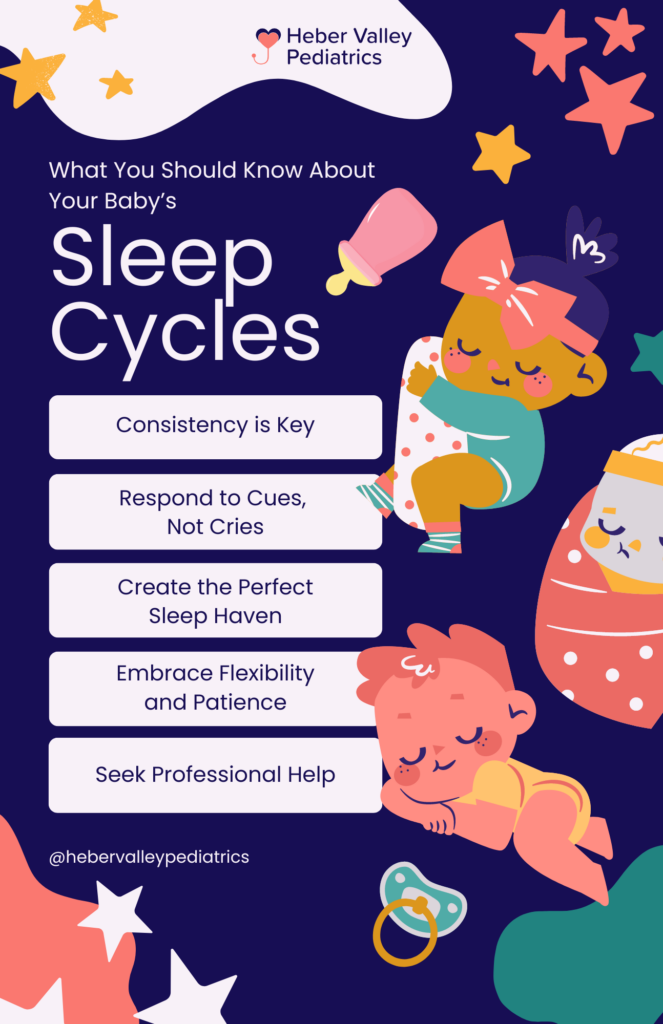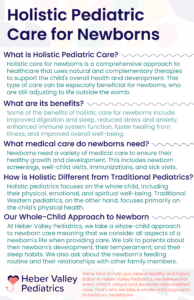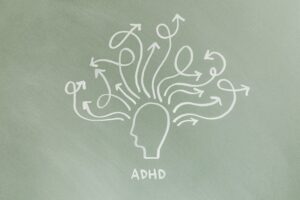
Welcome to the wonderful, ever-so-slightly sleep-deprived world of parenthood! One of the biggest adjustments new parents face is understanding their baby’s sleep patterns. It can feel like deciphering a foreign language, with short naps, frequent night wakings, and seemingly inexplicable cries. But fear not! Pediatric specialists here at Heber Valley Pediatrics, are here to walk you through the fascinating world of baby sleep cycles, offering insights and advice to help you and your little one get some much-needed rest.
Understanding Sleep Cycles:
Understanding the differences between active (REM) and quiet (non-REM) sleep is crucial for deciphering your baby’s sleep cycles and supporting their development. Let’s delve deeper into each phase, revealing their unique magic:
Active Sleep (REM):
- Brain on Fire: While your baby might seem still, their brain is buzzing with activity during REM sleep. Brainwaves resemble those of wakefulness, and dreaming is thought to occur here. This intense cerebral activity is crucial for:
- Memory Consolidation: Experiences and information learned during the day are processed and solidified into long-term memory.
- Brain Development: REM sleep fosters neural connections, language acquisition, and emotional regulation.
- Sensory Processing: REM helps integrate sensory information from sight, sound, and touch, shaping your baby’s understanding of the world.
- Physiological Clues: While eyes dart under closed lids, muscles are typically paralyzed, preventing wild flailing that might occur in dreams. Breathing becomes irregular, and heart rate increases, sometimes even exceeding daytime levels. If you are concerned about this, consider reaching out to a pediatric specialist.
Quiet Sleep (Non-REM):
- Rest and Repair: This phase is all about rejuvenation. Brain activity slows, body temperature decreases, and breathing deepens. Here’s what happens:
- Physical Growth: Growth hormone secretion peaks during deep sleep, fueling your baby’s rapid development in size and strength.
- Tissue Repair: Cells throughout the body undergo repair and restoration, crucial for overall health and well-being.
- Immune System Boost: This phase strengthens the immune system, making your little one more resilient to illness.
- Stages of Quiet Sleep: Non-REM sleep has three stages, each progressively deeper:
- Stage 1: Light sleep, easily disrupted by noise.
- Stage 2: Deeper sleep, with muscle relaxation and slower brainwaves.
- Stage 3: Deepest sleep, essential for physical restoration.
The Dynamic Duo:
REM and non-REM sleep work together in a beautiful choreography. During a typical sleep cycle, your baby will transition between these phases several times, with REM periods becoming longer as they age. This balanced dance ensures both brain development and physical rejuvenation, laying the foundation for a healthy and thriving life.
Decoding Your Baby’s Sleep Journey:
Now, let’s delve into the exciting (and sometimes frustrating) world of age-specific sleep patterns:
Newborns (0-3 months):
Get ready for a wild ride! Newborns have no concept of day and night, cycling through sleep and wakefulness every 2-3 hours. Your pediatric specialist should be able to answer any questions about this sleep stage. They spend more time in REM sleep, fueling their rapid development. Frequent feedings and diaper changes further disrupt longer stretches. Embrace cuddles, soothing techniques, and patience – this phase is temporary!
3-6 months:
A glimmer of hope! By now, your baby’s circadian rhythm starts to develop, distinguishing day from night. Sleep cycles stabilize a bit, and you might see longer stretches (4-6 hours) at night. This is a great time to establish a bedtime routine – bath, warm milk, quiet songs – to signal sleepiness.
6-12 months:
Hurray for consolidation! Babies start connecting sleep cycles, leading to longer nighttime stretches (7-8 hours) and predictable nap times. However, sleep regressions around 8 and 12 months are common, due to developmental leaps and separation anxiety. Stay consistent with your routine and offer comfort during these phases.
1-2 years:
Toddlerhood brings new challenges! Your little explorer might resist bedtime due to newfound mobility and curiosity. Offer age-appropriate choices, stick to the routine, and address any sleep anxieties. Remember, consistency is key!
Tips for Nurturing Healthy Sleep:
Getting your baby (and yourself!) the rest you both deserve can feel like an uphill battle. But fear not! Armed with the right strategies, you can create a sleep-conducive environment and encourage healthy sleep habits. Here are some key tips to remember:
1. Consistency is Key:
- Bedtime Routine: Establish a calming bedtime routine that signals it’s time to wind down. This could include a warm bath, gentle massage, quiet songs, and cuddling. Stick to this routine as closely as possible, even on weekends, to help regulate your baby’s internal clock.
- Sleep Schedule: Put your baby down at the same time each night, even if it means putting them down drowsy but awake. This consistency helps them learn to fall asleep independently and connect sleep cycles for longer stretches.
- Nap Routine: Develop a consistent nap routine as well, offering naps at predictable times and durations based on your baby’s age and individual needs.
2. Create the Perfect Sleep Haven:
- Darkness is Your Friend: Dim the lights in the nursery about an hour before bedtime to promote melatonin production, the sleep hormone. Blackout curtains or shades can further improve sleep quality.
- Cool and Calm: Aim for a room temperature between 68-72°F (20-22°C) for optimal sleep. Avoid using heavy blankets or stuffed animals in the crib for safety reasons.
- White Noise Magic: Consider using a white noise machine to mask distracting sounds and create a soothing atmosphere. Choose calming sounds like nature recordings or gentle white noise.
3. Respond to Cues, Not Cries:
- Sleepy Signs: Learn your baby’s sleepy cues, such as yawning, rubbing eyes, or fussiness. Put them down drowsy but awake when they show these signs, allowing them to practice self-soothing and fall asleep independently.
- Comforting Presence: While you shouldn’t jump at every peep, offer soothing words, pats, or gentle rocking if your baby cries. Avoid picking them up unless they need a diaper change or feeding.
- Avoid Cry-it-Out Before 4 Months: For very young babies under 4 months, attending to their needs quickly helps build trust and security. Once older, you can gradually implement sleep training methods with your pediatrician’s guidance.
4. Embrace Flexibility and Patience:
- Developmental Leaps: Sleep regressions are common during periods of rapid development or teething. Be patient, maintain the bedtime routine, and offer extra comfort during these temporary phases.
- Travel Adjustments: Expect some sleep disruptions when traveling. Bring familiar sleep items and try to stick to your baby’s usual sleep schedule as much as possible.
- Every Baby is Unique: Remember, what works for one baby might not work for another. Be patient, experiment with different approaches, and consult your pediatrician if you have any concerns.
Bonus Tip: Seek Professional Help:
Don’t hesitate to reach out to your pediatrician if you are struggling with your baby’s sleep for an extended period. They can assess your baby’s individual needs, rule out any underlying medical conditions, and offer personalized guidance and support.
By implementing these tips and tailoring them to your baby’s unique needs, you can create a sleep-conducive environment and foster healthy sleep habits that benefit both you and your little one. Remember, a well-rested baby is a happy baby, and a well-rested parent is a calmer, happier parent – and that’s a recipe for a peaceful and joyful home!





